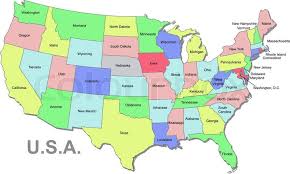Big banks aren’t getting a boost from Trump

And even though Trump bashed Wall Street (and his opponent Hillary Clinton’s ties to big banks) repeatedly during the campaign, Trump tapped several former Goldman Sachs (GS) employees for key posts in the White House.
The two most notable were Treasury Secretary Steven Mnuchin and National Economic Council director Gary Cohn, who even stepped down as Goldman COO to take the job. So it seemed that it was nothing but blue skies ahead for financial stocks.
It hasn’t turned out that way. Goldman Sachs has fallen 11% so far in 2017. JPMorgan Chase (JPM) has dropped 5%. Morgan Stanley’s (MS) stock is down slightly too. Citigroup’s (C) stock is actually in the black, but it’s only up 2% — less than the broader market.
What gives? Ironically enough, the stock market is currently in the midst of an unusually quiet stretch — despite the fact that the environment in Washington is anything but calm and serene.
Related: Wall Street enjoys calm start to the year
The VIX (VIX), a measure of volatility often referred to as Wall Street’s fear gauge is back to levels where it was trading at just before the market’s brief freakout last month, when the Dow fell nearly 373 points following the Comey-Trump-Flynn allegations.
To be sure, this is great news for most investors.
Earnings in the first quarter were strong, thanks largely to solid results from big tech companies, many of whom disagree with Trump’s stances on immigration and climate change. (So much for Trump being bad for Silicon Valley and good for Wall Street.)
But volatility is often the best friend for big Wall Street firms. The lack of is posing to be a problem.
JPMorgan Chase chief financial officer Marianne Lake said at a Deutsche Bank investment conference Wednesday that trading volumes were down 15% from a year ago so far in the second quarter, mostly in its fixed income division.
She referred to current conditions as a “quite subdued and challenging trading environment.”
Bank of America CEO Brian Moynihan, speaking at a Sanford C. Bernstein conference on Wednesday, said trading volumes are down 10% to 12% in second quarter.
Related: These are the stocks that are getting left behind in the Trump rally
And Morgan Stanley CEO James Gorman told Bloomberg in an interview from Beijing that his firm was seeing similar trends in its trading division.
Gorman said in the interview that the comments from Lake and Moynihan “are reflecting reality and I don’t think we’re very different.” He added that “we all have similar clients, if not the same clients.”
Another issue for the big banks? Interest rates remain relatively low.
More specifically, the difference between long-term and short-term bond rates is relatively narrow. That’s known as a flat yield curve on Wall Street. And it’s also not great news for banks.
It makes their lending businesses less profitable. Both Lake and Moynihan acknowledged the flattening yield curve as another factor that is hurting their earnings.
And the banks may not get much help from Trump in that department either — or the Federal Reserve for that matter.
Some thought that Trump’s stimulus plan, which was expected to be funded partly through more government debt, would lift longer-term bond yields. But it’s now unclear what Trump and Congress will be able to accomplish this year.
Meanwhile. the Fed is likely to keep raising rates, but at a slow and gradual pace. All of this is, once again, could be great news for consumers and most investors. But it’s not going to help Trump’s friends on Wall Street.




